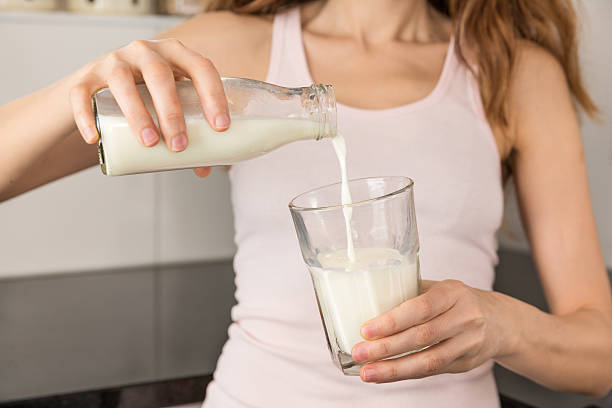Milk is a nutritious liquid that is produced by mammals as a food source for their young. It is a rich source of essential vitamins and minerals, and is often consumed by humans as a source of calcium, protein, and other nutrients. One question that many people have when it comes to milk is how many calories it contains. This is an important consideration for those who are trying to maintain a healthy weight or manage their calorie intake for other reasons. In this article, we will explore the various factors that can affect the number of calories in milk and provide some information on the average calorie content of different types of milk.
First, it is important to understand that the number of calories in milk can vary based on a number of factors. The type of milk, the fat content, and the serving size all play a role in determining the calorie content of milk.
One of the main factors that determines the number of calories in milk is the type of milk. Different types of milk, such as cow’s milk, goat’s milk, and plant-based milks, can have varying calorie contents. Cow’s milk is the most common type of milk consumed by humans and is also the type of milk that is most often used in the production of dairy products such as cheese and yogurt. Cow’s milk is typically rich in protein and calcium and has a moderate amount of fat. One cup (240 ml) of whole cow’s milk contains approximately 150 calories, 8 grams of fat, and 8 grams of protein.
In contrast, goat’s milk is lower in calories and fat compared to cow’s milk. One cup (240 ml) of goat’s milk contains approximately 168 calories, 9 grams of fat, and 9 grams of protein. Goat’s milk is also higher in certain minerals such as calcium and potassium compared to cow’s milk.
Plant-based milks, such as almond milk, soy milk, and coconut milk, are made from ground nuts, seeds, or grains and are often used as alternatives to cow’s milk. These types of milk are typically lower in calories and fat compared to cow’s milk and can be a good option for those who are lactose intolerant or following a vegan diet. For example, one cup (240 ml) of unsweetened almond milk contains approximately 30 calories, 2.5 grams of fat, and 1 gram of protein.
The fat content of milk is another factor that can affect the number of calories it contains. Whole milk, which is milk with a fat content of 3.25%, is higher in calories and fat compared to other types of milk such as reduced-fat milk or skim milk. One cup (240 ml) of whole milk contains approximately 150 calories, 8 grams of fat, and 8 grams of protein. In contrast, one cup (240 ml) of reduced-fat milk, which has a fat content of 2%, contains approximately 120 calories, 5 grams of fat, and 8 grams of protein. Skim milk, which is milk with a fat content of less than 0.5%, is the lowest in calories and fat. One cup (240 ml) of skim milk contains approximately 80 calories, 0 grams of fat, and 8 grams of protein.
In addition to the type and fat content of milk, the serving size can also affect the number of calories it contains. Milk is typically consumed in servings of 1 cup (240 ml), but the serving size can vary depending on the specific product and the individual’s needs. For example, a serving of milk on a bowl of cereal may be smaller than a serving of milk in a glass. It is important to pay attention to the serving size listed on the nutrition label to get an accurate idea of the number of calories in a serving of milk.

 Home
Home Health
Health Diet & Nutrition
Diet & Nutrition Living Well
Living Well More
More












